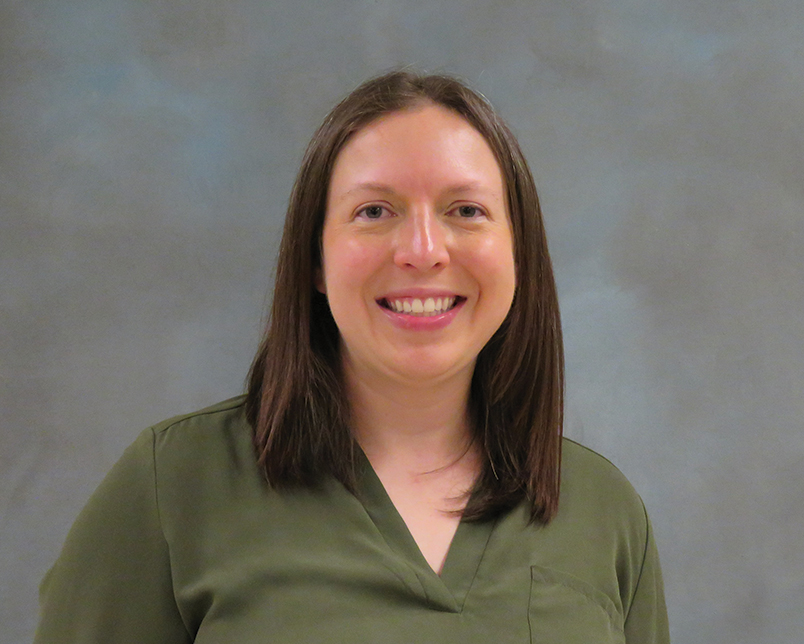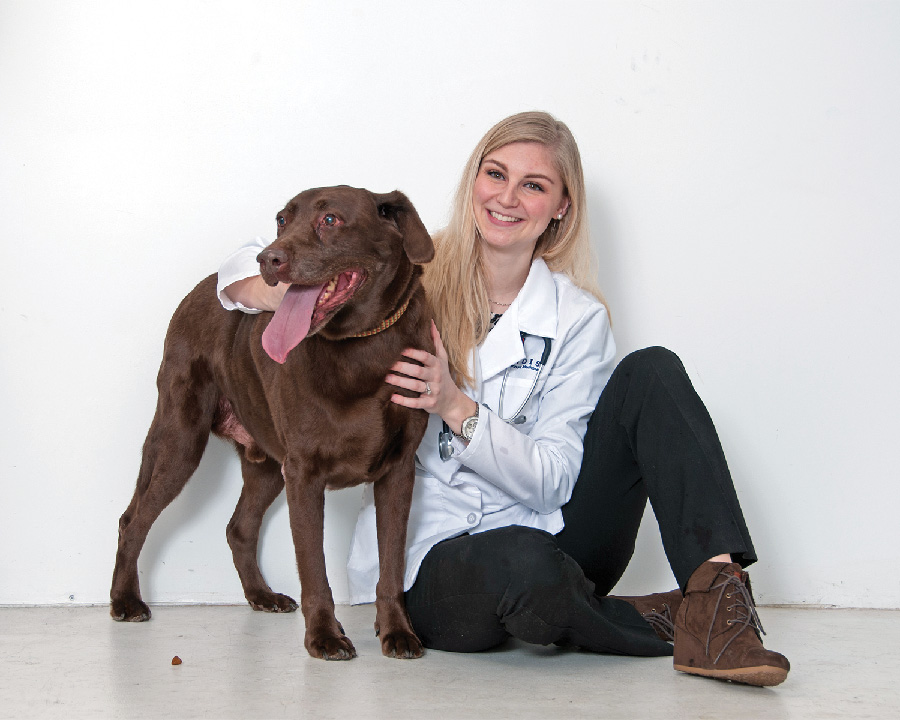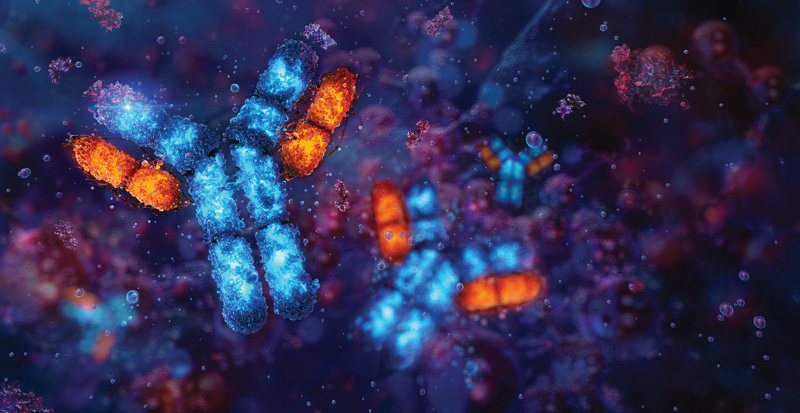Dr. Nicole Trenholme is an assistant professor of anesthesiology.
Tell us about your background.
I grew up riding horses and having tons of animals at home. My first job, at 16, was as a veterinary technician assistant in my home town of Collierville, Tenn.
I continued to work for that clinic throughout my undergraduate years on breaks and during summers. I also volunteered at a comparative medicine laboratory in high school one summer, getting exposure to lab animal medicine.
I got interested in anesthesia at my first job, where I remember anesthetizing a golden retriever puppy for a PDA ligation. I also assisted with anesthesia in some of the laboratory animals, including rabbits and pigs, at the comparative medicine lab.
In hindsight, I should have probably received more oversight, as I did not have the experience to be doing those things. But it helped solidified my interest in anesthetizing patients.
I did my undergrad at Colorado State University, then started veterinary school at Ross University. I had never thought that I would be living on a Caribbean island for several years, but life takes you on weird journeys!
In veterinary school, I became involved in numerous clubs and extracurriculars, including student government as both a class representative and then as student body president. I was involved with the AVMA accreditation process of Ross, being a liaison between the student body and administration.
In my free time I earned advanced certification in SCUBA diving and hosted home cooked dinners for other vet students. I was also involved with the Student Veterinary Emergency and Critical Care chapter and got to attend my first IVECCS as a student. Over breaks I worked at the community practice clinic on emergency.
During my clinical year, which I spent at North Carolina State University (NCSU), I took extra rotations in ECC as well as anesthesia and really enjoyed both of them. I was also recognized with a clinical competency award for small animal medicine by the faculty.
I finished my degree during January and did small animal relief work for a few months before starting a private practice rotating internship at Friendship Hospital for Animals in Washington, D.C. I worked up to 90% of the time in emergency and loved the excitement and case variety. I also got to do a lot of my own sedation and anesthesia.
I then returned to NCSU for a specialty internship in small animal ECC, where I taught laboratories and pre-clinical classes in addition to my required rotations. At that time, I wanted to be a criticalist when I grew up. I matched at the University of Missouri for my SA ECC residency, where I did a concurrent thesis-based master’s program in biomedical sciences. I also took on a lot more teaching (both on clinics and in didactic lectures as well as pre-clinical laboratories), as well as aiding in running the service during my third year. I also was able to present a case report at my first conference (IVECCS) to represent the University.
A year into ECC residency I realized that I missed working with other species. Also, the cases that I enjoyed the most were post-op septic abdomens, cases that required total intravenous anesthesia (TIVA) for mechanical ventilation, and others that required minute-to-minute adjustments and finetuning. I missed anesthesia and felt that I would be at a better place in my life pursuing that specialty as well.
After talking my husband into another three years, I applied for anesthesia residencies, moving to the University of Georgia (UGA) immediately following the end of my SA ECC residency. I hit the ground running and loved most of it. I was able to still work with critically ill patients, but I had a greater variety and spent more time doing the things that I enjoyed. I delved more into my research interests, and I presented numerous research abstracts at conferences, winning the ACVAA abstract award two years in a row and a UGA symposium abstract award. I also developed my teaching and study skills more.
In the past year, I have taken and passed both my ACVECC and ACVAA boards and am proud to be a diplomate in both colleges. ACVECC also awarded me a Credentials Grant to support my career as I start out, which is a great leg up to start out with. I am excited to now get to work at an institution that works with numerous species and where I am able to be involved with clinical medicine, teaching, and research.
What are your special interests?
I enjoy tailoring therapy to patient needs with techniques that are backed by evidence-based medicine. I am very interested in looking into using the patient state index (PSI) system for monitoring anesthetic depth in various species. I am also interested in developing total intravenous anesthesia (TIVA)-based protocols, especially with species like reptiles.
Outside of veterinary medicine, I think it is important to promote positive work-life balance within the profession. I love spending time on my motorcycle (a 2012 Triumph Thruxton), refinishing wooden furniture, and hiking/backpacking/other outdoor activities.
I also partake in various aerial arts, including silks/fabrics, lyra, and vertical pole. These take strength and flexibility, as well as a bit of creativity. Plus, there is nothing more fun that spinning upside down in a metal hoop!
Tell us about some of your favorite cases.
Most pyothorax cases are rewarding. It is typically a very fit hunting dog that has been in training and that is brought in because their times in the field are slightly slower than normal. They are a pathophysiologic challenge and at times can be very tenuous, with abrupt changes in oxygenation, hemodynamic stability, and metabolic derangements. Usually the effusion is too thick for traditional thoracocentesis, so they need a larger chest tube placed to evacuate the purulent material.
They typically come to anesthesia for advanced imaging, such as CT, in conjunction with their chest tube placement. They are also usually borderline or overtly septic, making them a higher challenge. These are great cases for TIVA because it reduces vasodilation that may occur with traditional inhalants, as well as having less alteration of normal mechanisms to adjust blood flow based on lung oxygenation (hypoxic vasoconstriction, which is blunted by inhalants).
These guys also typically have a decent amount of atelectasis from their pleural effusion, so they often benefit from the addition of PEEP (positive end expiratory pressure). They often wind up on supportive measures such as vasopressor therapy, glucose supplementation, and oxygen supplementation intra-procedurally and post operatively.
They present numerous challenges at once that keep you engaged in the case and on your toes!




